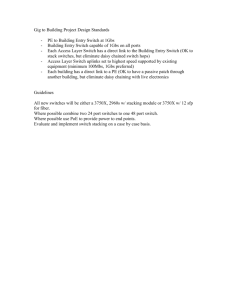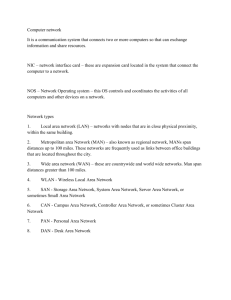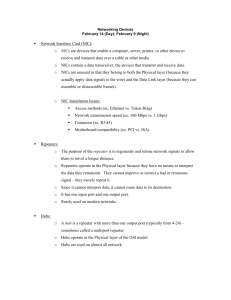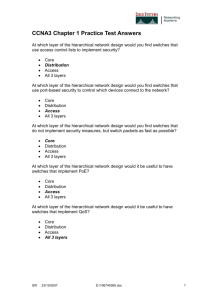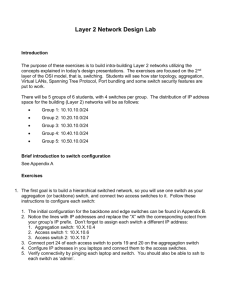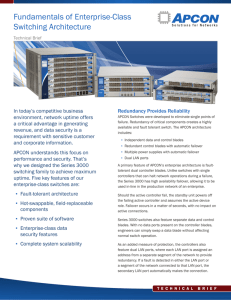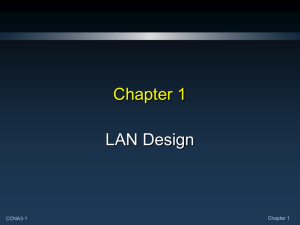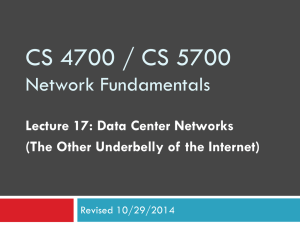Managed Switches
advertisement
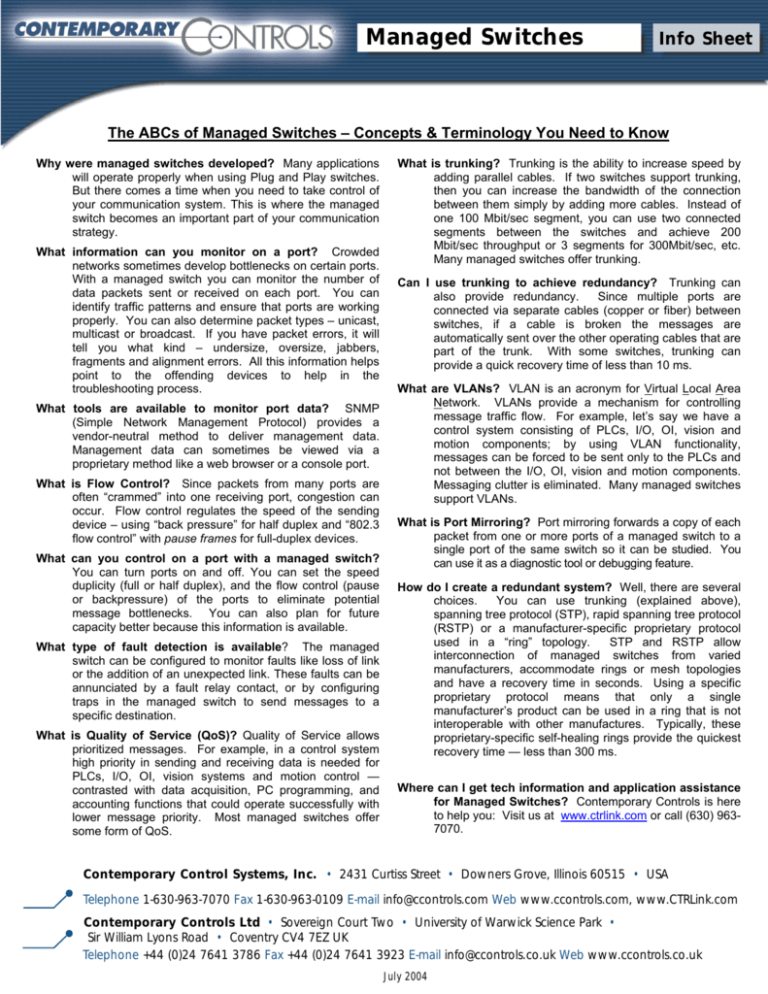
Managed Switches Info Sheet The ABCs of Managed Switches – Concepts & Terminology You Need to Know Why were managed switches developed? Many applications will operate properly when using Plug and Play switches. But there comes a time when you need to take control of your communication system. This is where the managed switch becomes an important part of your communication strategy. What information can you monitor on a port? Crowded networks sometimes develop bottlenecks on certain ports. With a managed switch you can monitor the number of data packets sent or received on each port. You can identify traffic patterns and ensure that ports are working properly. You can also determine packet types – unicast, multicast or broadcast. If you have packet errors, it will tell you what kind – undersize, oversize, jabbers, fragments and alignment errors. All this information helps point to the offending devices to help in the troubleshooting process. What tools are available to monitor port data? SNMP (Simple Network Management Protocol) provides a vendor-neutral method to deliver management data. Management data can sometimes be viewed via a proprietary method like a web browser or a console port. What is Flow Control? Since packets from many ports are often “crammed” into one receiving port, congestion can occur. Flow control regulates the speed of the sending device – using “back pressure” for half duplex and “802.3 flow control” with pause frames for full-duplex devices. What can you control on a port with a managed switch? You can turn ports on and off. You can set the speed duplicity (full or half duplex), and the flow control (pause or backpressure) of the ports to eliminate potential message bottlenecks. You can also plan for future capacity better because this information is available. What type of fault detection is available? The managed switch can be configured to monitor faults like loss of link or the addition of an unexpected link. These faults can be annunciated by a fault relay contact, or by configuring traps in the managed switch to send messages to a specific destination. What is Quality of Service (QoS)? Quality of Service allows prioritized messages. For example, in a control system high priority in sending and receiving data is needed for PLCs, I/O, OI, vision systems and motion control — contrasted with data acquisition, PC programming, and accounting functions that could operate successfully with lower message priority. Most managed switches offer some form of QoS. What is trunking? Trunking is the ability to increase speed by adding parallel cables. If two switches support trunking, then you can increase the bandwidth of the connection between them simply by adding more cables. Instead of one 100 Mbit/sec segment, you can use two connected segments between the switches and achieve 200 Mbit/sec throughput or 3 segments for 300Mbit/sec, etc. Many managed switches offer trunking. Can I use trunking to achieve redundancy? Trunking can also provide redundancy. Since multiple ports are connected via separate cables (copper or fiber) between switches, if a cable is broken the messages are automatically sent over the other operating cables that are part of the trunk. With some switches, trunking can provide a quick recovery time of less than 10 ms. What are VLANs? VLAN is an acronym for Virtual Local Area Network. VLANs provide a mechanism for controlling message traffic flow. For example, let’s say we have a control system consisting of PLCs, I/O, OI, vision and motion components; by using VLAN functionality, messages can be forced to be sent only to the PLCs and not between the I/O, OI, vision and motion components. Messaging clutter is eliminated. Many managed switches support VLANs. What is Port Mirroring? Port mirroring forwards a copy of each packet from one or more ports of a managed switch to a single port of the same switch so it can be studied. You can use it as a diagnostic tool or debugging feature. How do I create a redundant system? Well, there are several choices. You can use trunking (explained above), spanning tree protocol (STP), rapid spanning tree protocol (RSTP) or a manufacturer-specific proprietary protocol used in a “ring” topology. STP and RSTP allow interconnection of managed switches from varied manufacturers, accommodate rings or mesh topologies and have a recovery time in seconds. Using a specific proprietary protocol means that only a single manufacturer’s product can be used in a ring that is not interoperable with other manufactures. Typically, these proprietary-specific self-healing rings provide the quickest recovery time — less than 300 ms. Where can I get tech information and application assistance for Managed Switches? Contemporary Controls is here to help you: Visit us at www.ctrlink.com or call (630) 9637070. Contemporary Control Systems, Inc. • 2431 Curtiss Street • Downers Grove, Illinois 60515 • USA Telephone 1-630-963-7070 Fax 1-630-963-0109 E-mail info@ccontrols.com Web www.ccontrols.com, www.CTRLink.com Contemporary Controls Ltd • Sovereign Court Two • University of Warwick Science Park • Sir William Lyons Road • Coventry CV4 7EZ UK Telephone +44 (0)24 7641 3786 Fax +44 (0)24 7641 3923 E-mail info@ccontrols.co.uk Web www.ccontrols.co.uk July 2004
